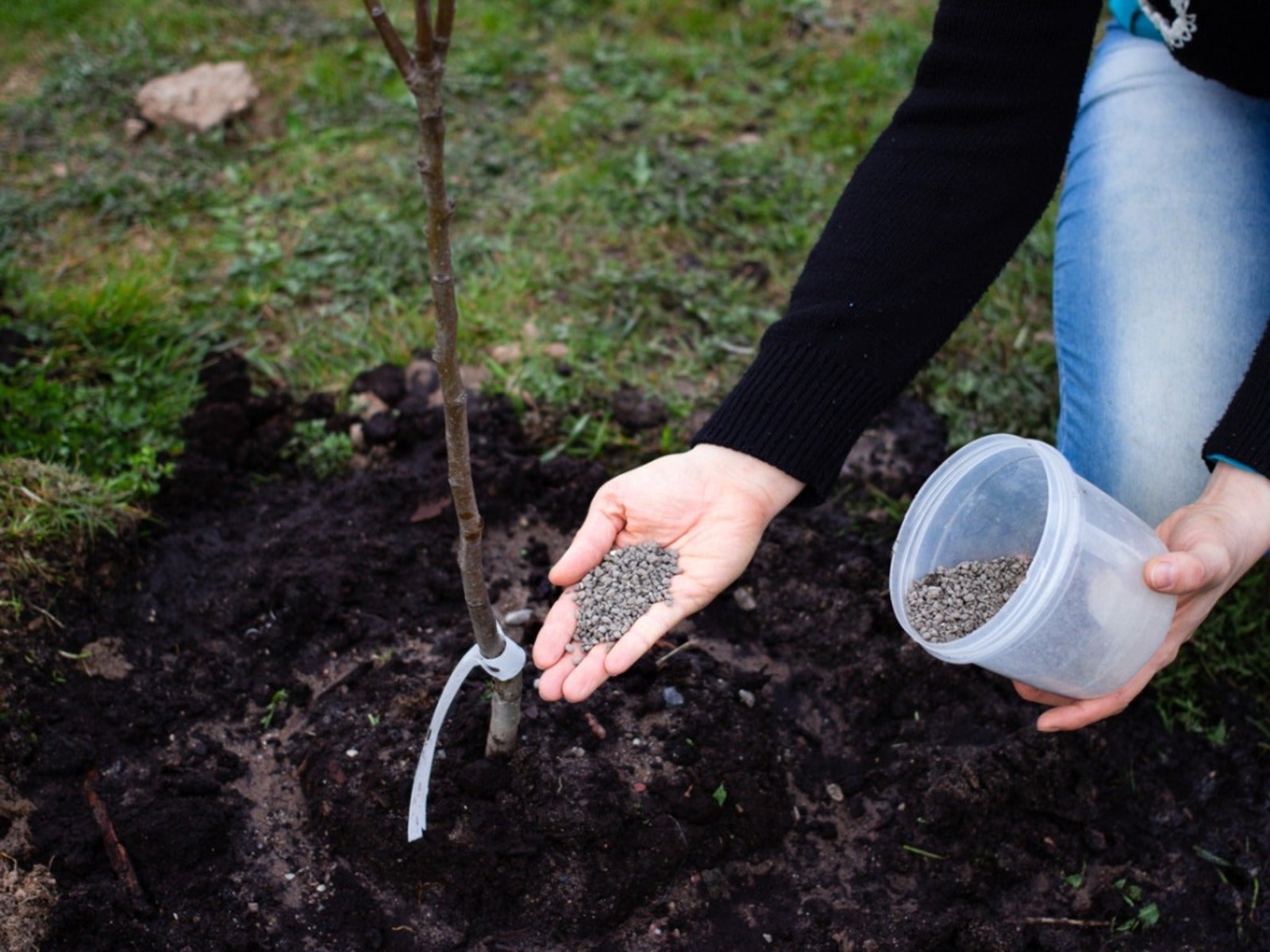Picking The Best Fertilizer For Fruit Trees


Fertilizer can help any of your landscape trees, but it is absolutely necessary for fruit trees. You might enjoy a fruit tree’s blossoms and the shade it offers, but the primary purpose for fruit trees in the garden is the fruit. In order to produce abundant and juicy fruit, a fruit tree has to be healthy.
What is the best fertilizer for fruit trees? Is 16-16-16 fertilizer good for fruit trees? That depends on the type of tree and how fast it is growing. Read on for information about fertilizer for fruit trees.
Best Fertilizer for Fruit Trees
Fruit trees are hungry trees, feeding heavily on mineral nutrients in the soil. Some 16 elements are considered essential nutrients, and fruit trees require all of them. But their primary need is for macronutrients, including nitrogen, phosphorus, potassium (the NPK nutrients listed on every fertilizer package), as well as calcium, magnesium and sulfur.
How about carbon, hydrogen and oxygen? These are also necessary for fruit trees, but you don’t have to consider them when it comes to fertilizer. The trees get these from the air, the water and organic matter found in the soil.
The key to providing soil for fruit trees is to figure out first which nutrients your soil already contains. The fertilizer you add can be organic or conventional (chemical), but it should only contain nutrients that are lacking in the soil.
Fertilizing Apple Trees
Apple fertilizer needs vary year to year. Keep your eye on the annual growth of your young apple trees. Their growth each year will dictate whether to increase fertilizer amounts.
From the ages of 1 year to 3 years, apple trees should add a foot (30 cm) of growth or more every year. If they are growing less than that, you’ll need to increase the amount of fertilizer by 50% the following year.
Sign up for the Gardening Know How newsletter today and receive a free copy of our e-book "How to Grow Delicious Tomatoes".
Once an apple tree is 4 years old, it will need additional nitrogen. Again, the amount is determined by growth. If the tree has grown at least 6 inches taller (15 cm), don’t increase the fertilizer. If it hasn’t, increase the nitrogen by 50%. If you see generous growth of more than a foot (30 cm), no more regular fertilizer or calcium nitrate is needed. Instead, only apply sul-po-mag and boron.
Boron should be applied every three years in the amounts described on the label. Generally young fruiting trees need 4 oz (113 g) of boron, bigger trees need 8 oz (226.7 g), and big trees can be given 12 oz (340 g) every three years.
Fertilizing Pear Trees
Test your soil regularly to be sure you don’t give pears potassium, magnesium or sul-po-mag if it is available in sufficient amounts in the soil. Fertilize pear trees with 1 pound (453.5 g) of calcium nitrate in the spring if their annual growth is under 6 inches (15 cm).
What about nitrogen? Nitrogen helps a tree to grow faster, but with pears, excess growth makes the tree susceptible to fire blight. So, cut back the nitrogen for any tree 4 years or older that grows more than 12 inches (30 cm) annually.
Fertilizing Stone Fruits
Stone fruit fertilizing is a little different. The rule is, no fertilizer unless the tree sets a crop the previous year. If it does set a good crop, fertilize it with one pound (453.5 g) calcium nitrate. Alternatively use 1 ½ lb. (680 g) of 10-10-10 fertilizer for fruit trees.
Organic Fertilizer for Fruit Trees
Organic fertilizer for fruit trees are those fertilizers that are naturally occurring from plant or animal sources. These organic fertilizers include manures, composts, blood meal, bone meal, fish meal, alfalfa pellets and others. These can be found as granular or liquid fertilizer for fruit trees.
Non-Organic Fertilizer for Fruit Trees
Non-organic fertilizer for fruit trees is also called chemical or conventional fertilizer. These are either made of chemical salts or processed minerals. They are also found as granular or liquid fertilizer for fruit trees.
Note: Any recommendations pertaining to the use of chemicals are for informational purposes only. Chemical control should only be used as a last resort, as organic approaches are safer and more environmentally friendly.

Teo Spengler is a master gardener and a docent at the San Francisco Botanical Garden, where she hosts public tours. She has studied horticulture and written about nature, trees, plants, and gardening for more than two decades, following a career as an attorney and legal writer. Her extended family includes some 30 houseplants and hundreds of outdoor plants, including 250 trees, which are her main passion. Spengler currently splits her life between San Francisco and the French Basque Country, though she was raised in Alaska, giving her experience of gardening in a range of climates.